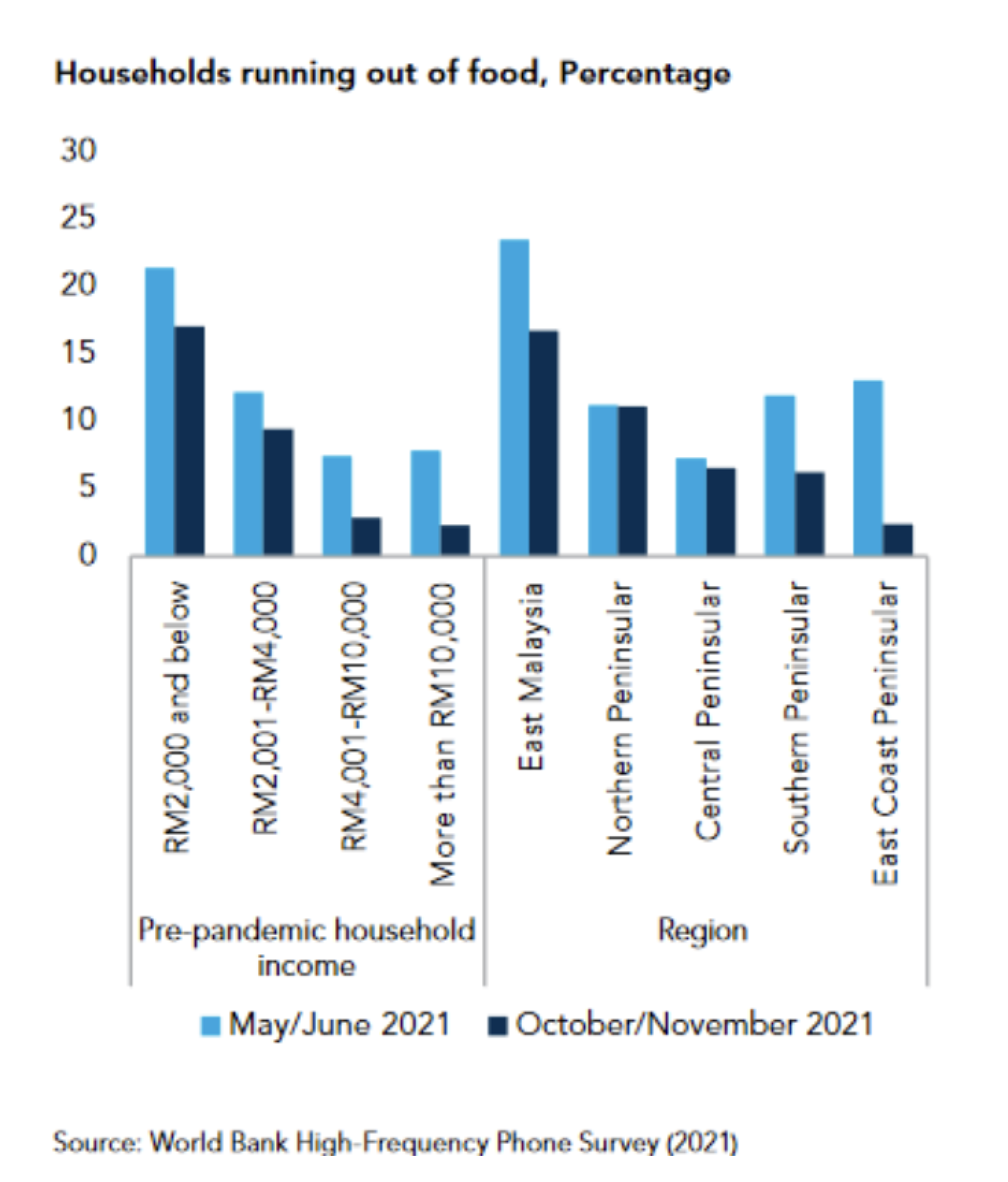Highlights
The momentum in Malaysia’s economic recovery continues. However, recovery at the household level has been slow, particularly in the case of the most vulnerable. The incidence of poverty in Malaysia rose substantially, from 5.6 percent in 2019 to 8.4 percent in 2020. The World Bank’s High-Frequency (HiFy) Phone Survey found that nearly a quarter of low- income households (earning RM 2,000 and below) did not have access to cash transfers. Moreover, government assistance was not shock-responsive, with the same chance of receiving assistance between households that experienced economic shocks and those that did not. The same survey found that food insecurity remained high, with 17 percent of low-income households still running out of food, and with recent flood and food inflation further straining household finances. Despite improving trends, food insecurity was more prevalent among low-income households and in specific regions.

Despite increasing inflationary pressures at a global level, inflation has remained broadly stable in Malaysia. The consumer price inflation (CPI) in Malaysia was estimated to stand at 2.3 percent in April 2022, among the lowest rate in the region. CPI has been low due to (i) fuel subsidies and price control mechanisms, and (ii) producers’ bearing the brunt of price increases rather than passing them through to consumers, at least so far.
| Year of publication | |
| Geographic coverage | Malaysia |
| Originally published | 20 Jun 2022 |
| Related organisation(s) | World Bank |
| Knowledge service | Metadata | Global Food and Nutrition Security | Food security and food crises |
| Digital Europa Thesaurus (DET) | economic conditionseconomic analysiswarCOVID-19povertyVulnerable groupspolicymaking |
